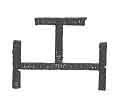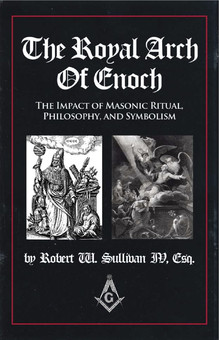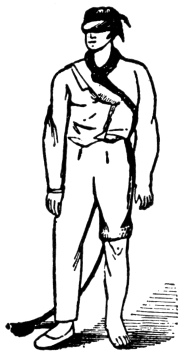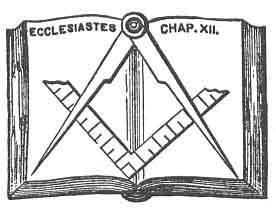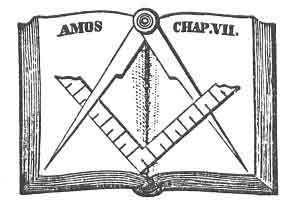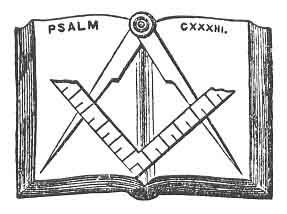In preparing the foundations, as we are told by the Jewish Rabbins, the workmen discovered a subterranean vault or cavity, supported by seven pairs of pillars supporting so many arches. This vault, at the destruction of Jerusalem, having been filled with the rubbish of the building, escaped observation, and was indicated at the present period by the discovery of a keystone among the foundations. The Rabbins add, that Josiah, foreseeing the destruction of the Temple, commanded the Levites to deposit the Ark of the Covenant in this vault, where it was found by some of Zerubbabel’s workmen. But there is no ground for this belief; for if the secret of the vault had been known to Josiah, it must have been known also to his idolatrous predecessors. who would doubtless have plundered it of its valuable contents, and exposed them to the world, in contempt of the true God to whom they referred, and whom these degenerate monarchs had wholly renounced. It is much more probable, that in the latter years of Solomon, when he had almost forgotten God, his visits to this vault were discontinued, and the entrance being curiously concealed among the caverns underneath his palace. the secret died with him, and the communication was forever closed. It is certain, however, if the tradition of this vault be correct, that the Ark of the Covenant was not found in it; p. 247 for it was one of the invaluable gifts of God which the second Temple did not contain, and consequently it could not have been preserved by Josiah.–Historical Landmarks, vol. ii. p. 436.
249:1 The author of Ahiman Rezon has stated that he could convey his mind to an ancient Mason in the presence of a modern Mason, without the latter knowing whether either of them were Masons. He further asserted that he was able, with a few Masonic implements, i.e., two squares and a common gavel or hammer, to convey any word or sentence of his own, or the immediate dictations of a stranger, to a skilful and intelligent Free-mason of the ancient order, without speaking, writing, or noise; and that to any distance, when the parties can see each other, and at the same time be able to distinguish squares from circles. This Masonic system of cipher-writing is now well understood.–Origin of the English Royal Arch, p. 42.
250:1 The WORD of the Royal Arch Degree, as worked in England, is Jao-Bul-On.
Macrobius, in his Saturnalia (lib. i. 18), says that it was an admitted axiom among the heathen, that the triliteral JAH, or rather ΙΑΩ, was the sacred name of the Supreme God. And the Clarian oracle, which was of unknown antiquity, being asked which of the deities was named ΙΑΩ, answered in these memorable words:
“‘The initiated are bound to conceal the mysterious secrets. Learn thou, that ΙΑΩ, is the Great God Supreme, who ruleth over all.’
“Now it so happens, that in the gems of the early Christians we find these very letters, ΙΑΩ, which are an abbreviation of the name of JEHOVAH, used as a monogram to express the name of the Saviour of mankind, who was thus represented as existing before time was, and shall exist when time shall he no more. It was first adopted by the Eastern Church, and signified Ιησους, Αλφα Ομεγα, Jesus, Alpha Omega, or in other words: Jesus, the First and the Last.”–The Insignia of the Royal Arch, p. 32.
The Royal Arch Word to have been perfectly in keeping with the Degree, and with the general construction of Masonry, should have been a triad, not only of syllables, but also of letters. Our transatlantic brethren have seen it in its true light; but they have corrected the error unlearnedly. It ought to have been, if the principle of its construction be allowed, to be orthodox:
|
Syriac. |
Chaldee. |
Hindoo. |
|
_____ _____ _____ |
_____ _____ _____ |
_____ _____ _____ |
The Insignia of the Royal Arch, p. 34. That is to say, instead of JAO-BUL-ON, or JAH-BUH-LUN, Dr. Oliver suggests:
|
Syriac. |
Chaldee. |
Hindoo. |
|
JAO, |
BEL, |
AUN, |
|
or |
or |
or |
|
JAH. |
BUL. |
AUM. |
For at page 15 of The Insignia, he writes thus:

Moe is the founder of GnosticWarrior.com. He is a father, husband, author, martial arts black belt, and an expert in Gnosticism, the occult, and esotericism.

